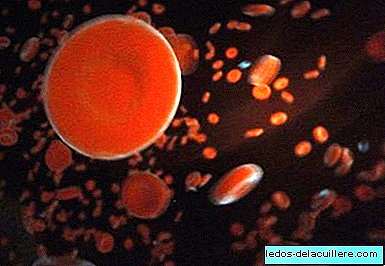Galactosemia (etymologically means "galactose in the blood") is a hereditary disease caused by an enzymatic deficiency, which affects the metabolism of galactose. A baby with galactosemia It could accumulate galactose derivatives in your body, which would damage the liver, brain, kidneys and eyes.
Today on the Day of Rare Diseases we wanted to get a little closer to this disease considered as such, which in western countries affects approximately one in 50,000 newborns.
There are several types of galactosemia, although we focus on the so-called "classical galactosemia," which occurs when babies do not have sufficient amounts of the enzyme called "galactose-1-phosphate-uridyltransferase" (GALT).
People with galactosemia are unable to completely break down simple galactose sugar. Galactose makes up half of lactose, the sugar found in milk. This is why people with galactosemia cannot tolerate any form of milk (neither human nor animal) and babies have to be given an alternative.
Galactosemia, which affects boys and girls equally, is inherited as an autosomal recessive trait. This means that parents of children with galactosemia almost never have the disease, but that each parent has an altered gene that causes the disease (the other gene in the pair works well). Therefore, they are called "carriers." When both parents are carriers, in each pregnancy there is a 25% chance that the child has galactosemia.
As we see below, Newborns with classical galactosemia begin to show health effects after a few days of feeding on breast milk or artificial milk formulas. Almost all cases of galactosemia could be detected by screening tests in the newborn.

Symptoms of galactosemia in the baby
Babies with galactosemia may have symptoms in the first days of life with breast milk or with artificial milk containing lactose. Symptoms may be due to a serious blood infection with the E. coli bacteria. At this time, it may be too late to avoid serious injury to the baby and even neonatal death can occur.
The symptoms of galactosemia in the newborn are: seizures, irritability, lethargy, poor diet, poor weight gain, yellowing of the skin and sclera (jaundice), vomiting. As these symptoms are quite general, the correct diagnosis is often delayed, hence the importance of detecting galactosemia as soon as possible, in neonatal tests.
Galactosemia treatment
The treatment consists of making a special diet, immediately and forever suppressing galactose, a component of milk, and food sources of galactose derivatives. They have to be eliminated throughout the person's life:
- milk and dairy products;
- processed and prepackaged foods generally contain lactose;
- tomato sauces;
- some sweets;
- certain medications (tablets, capsules, sweetened liquid drops containing lactose as filler);
- some fruits and vegetables also contain galactose;
- any food or medicine that contains the ingredients lactulose, casein, caseinate, lactalbumin, curd, whey or whey solids.
As we can see, the treatment is simple for the disease to progress favorably in the baby, but if there is no neonatal screening, the symptomatology of the disease is a manifestation that it has been late and there are probably already lesions in the liver and nervous system. central.
In the case of babies, they have to feed on artificial milk without lactose, such as some based on soy protein, and certain calcium supplements are recommended to prevent bone demineralization. Some doctors also advise taking vitamin D and vitamin K supplements, in addition to calcium.
When the treatment begins before the ten days of the baby's life there is a better chance that the baby will have normal growth, development and intelligence. Some children who receive early treatment may have stunted growth, but most reach a normal height in adulthood.
In any case, despite adequate treatment, the later it may begin, long-term complications such as cognitive disorders, motor deficits, ovarian dysfunction with decreased female fertility and decreased bone density may occur (male fertility has not been thoroughly studied). This is possibly due to damage in the fetal period.
Babies and young children with galactosemia will need regular blood and urine tests to detect toxic substances that occur when galactosemia is not controlled. The results of the analyzes will help doctors and the dietitian to adapt the treatment to the needs of the child.
In Spain, galactosemia is not included in neonatal screening of some autonomous communities being its approximate incidence of 1 per 50,000 newborns. If early detection is not included with the newborn's heel test and the disease is not detected as soon as possible, it is when complications arise.
The Spanish Federation of Rare Diseases on the Day of Rare Diseases claims the investigation as the hope of all affected people and their families and we hope that progress will also be made in terms of galactosemia and especially that its early detection is included in neonatal units routinely












